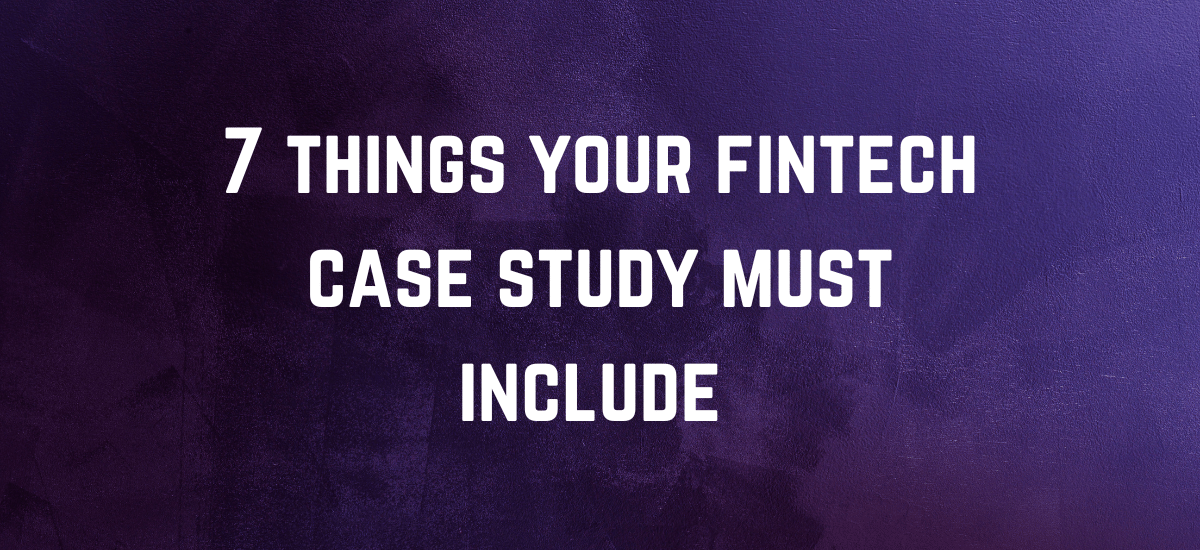by deborah
Share
by deborah
Share

The financial technology (fintech) industry has grown steadily since 2017, and that trend is expected to continue in the coming years.
With so much growth in the industry, there’s more competition for businesses like yours — which means marketing is more important than ever. If you don’t have a clear marketing strategy, or if it’s been a while since you revisited your approach, now is a great time to take a closer look.
Discover the ins and outs of creating an effective fintech marketing strategy below.
Clarify Your Marketing Mix
Your company’s marketing mix consists of the four Ps:
- Product: The products or services you offer your clients (accounting services, tax preparation services, etc.)
- Price: What do you charge for those products or services?
- Place: Where do you sell your products or services? For example, do you work in an office or offer assistance online?
- Promotion: Where do you promote your products or services? Do you have a website, social media profiles, etc.?
Identifying these four things will give you a solid foundation to build a more detailed marketing strategy.
Establish Marketing Objectives
Next, establish specific marketing objectives. In other words, what do you want to accomplish by marketing your fintech company?
Do you want to attract a certain number of new clients by the end of the quarter, for example? Do you want to increase the number of website views you receive each month?
When setting objectives, make sure they meet the following criteria:
- Specific
- Measurable
- Attainable
- Relevant
- Time-based
If an objective checks these boxes, it’ll be easier to track your progress and increase your chances of achieving it.
Set a Marketing Budget
How much can you afford to spend on your fintech company’s marketing strategy?
On average, new businesses spend about 12-20 per cent of their gross revenue on marketing, and experienced companies spend roughly 6-12 per cent.
First, look carefully at your company’s budget to determine how much you can dedicate to marketing.
Next, get more specific about how you’ll divide the marketing budget. For example, how much will you spend on social media ads, video production, etc.?
Try to be as conservative as you can with your budget. You’ll likely run into unexpected costs along the way, so it’s helpful if you have a bit of a financial cushion.
Conduct a Competitive Analysis
A competitive analysis allows you to get a closer look at other businesses in your industry.
Say you run an online lending company. In that case, you would research other online lenders to see how your services compare to theirs.
Do they offer anything you don’t, or vice versa? How does their content strategy or social media presence compare to yours?
Use these insights to refine your marketing strategy and fill in gaps that your competitors haven’t. For example, if another online lender doesn’t utilise video content marketing, perhaps you’ll make that a cornerstone of your marketing plan.
Segment Your Audience
Audience segmentation involves breaking down your fintech company’s audience based on the following criteria:
- Demographics (age, gender, profession, income, etc.)
- Psychographics (priorities, personalities, values, etc.)
- Lifestyle (hobbies, entertainment preferences, etc.)
- Behaviour (brand preferences, shopping habits, etc.)
You can use this information to get to know your audience better. Then, you can develop buyer personas that represent different people you want to cater to with your marketing materials.
Create a Content Marketing Plan
Content is critical to a successful marketing strategy. A solid fintech content marketing plan will include a mix of these content types:
- Video
- Blog posts or news articles
- Social media content
- Educational courses or webinars
- In-depth educational content (white papers, case studies, etc.)
Diversify your content types to reach different segments of your audience. Some people might prefer video, whereas others may respond better to a white paper or blog post.
Establish Metrics and KPIs
Metrics and key performance indicators (KPIs) allow you to monitor progress and ensure you’re on track to achieving your marketing goals. Some KPIs you might pay attention to include customer acquisition costs (CAC), organic website traffic, or conversion rates.
Choose a specific time period for the metrics and KPIs you want to follow, then check in regularly leading up to the end of the period to see how you’re doing and identify places where you can improve.
Get Help with FinTech Content Marketing Today
An effective, detailed fintech marketing strategy will ensure you and your team stay on the same page while promoting your business and connecting with your target audience.
Follow the steps listed above to create a clear marketing plan that will help you achieve your short- and long-term objectives.
Do you need more help with creating content for your fintech company? If so, we’re ready to assist at FinTech Content Marketing.
Get in touch today to find out how we can simplify the content marketing process.





